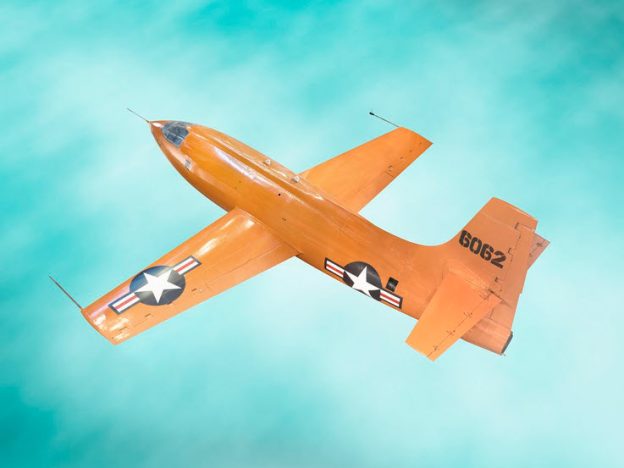On May 18, 1953, Jackie Cochran became the first woman to break the sound barrier and set a women’s absolute speed record of 652.337 mph. On Aug. 24, 1961, a jet streaked over the desert near Edwards Air Force Base (AFB). Fast planes were not unusual in that stretch of the sky over Southern California, but women pilots were. In the cockpit of Northrop’s new two-seat, twin-engine supersonic trainer, the T-38 Talon, was Jacqueline Cochran. And, according to the Smithsonian Magazine, the 55-year-old pilot was on a mission: reclaim her status as the fastest woman alive.
From 1906 through 1980, Jacqueline “Jackie” Cochran was an aviator in the US. She learned to fly in 1932, partly to promote her cosmetics company. She had begun after being orphaned as a youngster and reared in poverty. She set a new speed record for female pilots crossing North America in 1938. She trained female transport pilots in the British and then the US Air Force auxiliary during World War II. Cochran was the first commander of the Women’s Flying Training Detachment during World War II, and she played a key part in the Army Air Forces’ development of female positions. In 1953, she achieved the world speed record for both men and women in a jet.
According to a post that appeared on Edwards Air Force Base Facebook Page, on May 18, 1953, she became the first woman to break the sound barrier and set a women’s absolute speed record of 652.337 mph, both in the same Canadian F-86, with Maj. Chuck Yeager flying the chase plane. But the French test pilot Jacqueline Auriol soon bested her record, by 63 miles per hour.
Could the T-38 help the seasoned racer get it back?
The T-38, created to train a new generation of pilots, was brand-new when Cochran persuaded Northrop to lend her one. Yeager trained her on it for several weeks before she began her record attempts and was flying as her wingman that day in August 1961, when she averaged 844.20 miles per hour over a straightaway, besting Auriol’s record by 129 miles per hour. Over the next seven weeks, Cochran set seven more records in the Talon, including one for absolute altitude at 56,071 feet and another for speed over a 100-kilometre closed course. “She flew one of the most perfect runs that have ever been flown,” Yeager later wrote of that feat.
She went on to set a slew of female flying records, including many at Edwards AFB, where she was awarded the women’s Harmon Trophy in 1953. On May 11, 1964, at Edwards AFB, California, Jacqueline Cochran flew a Lockheed F-104G Starfighter, 62-12222, to 2,300.23 kilometres per hour (1,429.30 miles per hour)—Mach 2.16—over a straight 15 to 25-kilometre course. She was the first woman to fly faster than Mach 2 and she set a new Fédération Aéronautique Internationale (FAI) World Speed Record.

Jackie Cochran wrote about flying the 15/25 kilometre straight course in her autobiography: Picture in your mind a rectangular tunnel, 300 feet high, a quarter of a mile wide, and extending 20 miles long through the air at an altitude of 35,000 feet. I had to fly through that tunnel at top speed without touching a side. There were no walls to see but radar and ground instruments let me know my mistakes immediately. Up there at 35,000 feet the temperature would be about 45 degrees below zero. Not pleasant but perfect for what I was doing. Inside the plane, you are hot because of the friction of speeding through the air like that. The cockpit was air-conditioned, but when you descend, things happen so fast that the plane’s air-cooling system can’t keep up with it. I was always hot and perspiring back on the ground.
Cochran set three-speed records with this F-104G in May and June 1964. According to This Day in Aviation, under the Military Assistance Program, the US Air Force transferred it to the Republic of China Air Force, where it was assigned number 4322. It crashed on Jul. 17, 1981. At the time of her death, she held more speed, altitude, and distance records than any other pilot, male and female. Source: ‚The Aviation Geek Club‚. Photo credit: ‚U.S. Air Force‘.






